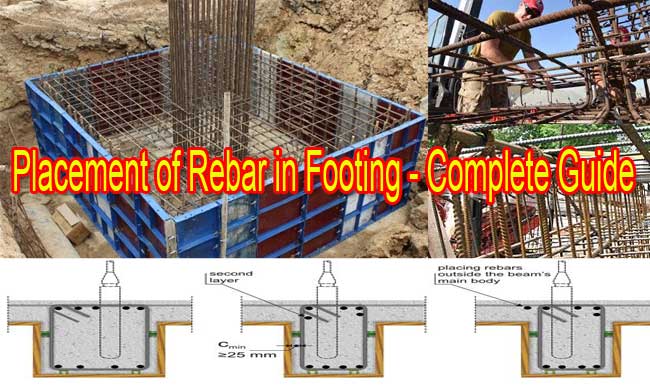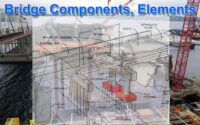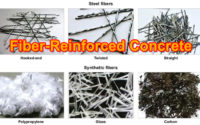How to Place Rebar in Footings – Vertical and Horizontal Rebar Placement
Steel support shapes a significant piece of solid establishments. In this manner, the great situation of level and vertical rebars in a balance is of most extreme significance as putting concrete. The situation, size, spread, tying and resilience in steel support are considered to accomplish the extreme proficiency of the balance.
Placement / Arrangement of Rebar in Footings
Arrangement of fortification in balance requires exercises, for example, checking for solid spread, area, support tying and supports and so on.
1. Least Concrete Cover
The solid spread is the thickness or measure of cement set in the middle of the strengthening steel and surface of the solid part. The spread is the absolute most significant factor in shielding strengthening steel from erosion. The spread is additionally important to guarantee that the steel bonds to the solid alright to build up its quality.
The base spread for cast set up concrete is indicated by the ACI 318 Building Code.
- For solid cast against and for all time presented to earth, (for example, footings) – 3 inches
- For concrete presented to climate or earth, (for example, storm cellar dividers)
6 bars and bigger – 2 inches
5 bars or littler – 1½ inches
- For concrete not presented to climate or in contact with the ground:
chunks, dividers, and joists – #14 and #18 bars – ½ inch
- Slabs, walls/dividers, and joists –
11 bars and littler – ¾ inch
Shafts and segments – 1½ inches
2. Position and placement of Rebars
It is a general principle that fortifications ought to be set at the pressure side at the base of the balance. In a square balance, rebars are put consistently in the two bearings. ACI code requires that the rebars be set not in excess of 18 inch separated. In a rectangular balance, rebars in the long course are set consistently however not in the short direction.ACI code (15.4.4.2) requires a specific bit of fortifications a short way to be put inside a band equivalent to the width of balance in the short heading.

The conveyance proportion of length to short side is determined dependent on the viewpoint proportion of balance as –

Setting of rebars in balance bigly affects the heap conveying limit of the balance. Any inappropriate position can cause genuine basic disappointments. For instance – bringing down the top bars or raising the base bars by ½ inch more than that predetermined in a 6-inch-profound chunk could decrease its heap conveying limit by 20%.
3. Supports of Reinforcement
Reinforcement in the balance can’t be set in the dirt or hard ground as it is powerless to consume. In any event, the setting of rebars over the layer of crisp concrete and afterward pouring increasingly concrete is likewise not worthy as the situation of the rebar may change while pouring of cement.
Bar underpins are utilized to hold the fortifying bars set up to achieve the best possible profundity of spread.
For appropriate setting, rebar underpins are utilized which comes in numerous sizes and of various materials, for example, steel wire, precast cement, or plastic.
Seats and supports are accessible in different statures to help explicit strengthening bar sizes and positions.
4. Rebar Tying
In spite of the fact that the tie steel doesn’t add to the quality of the support, it is utilized to make sure about and forestall the rebars from uprooting during development exercises and solid situation.
To tie the rebars, tie wire is utilized which is commonly 16½–or 16-measure dark, delicate, tempered wire, albeit heavier fortification may require 15-or 14-check wire to hold the best possible situation of the rebar.
Tying of all crossing point isn’t required, each fourth or fifth is regularly adequate. Care must be taken to keep the parts of the bargains are away from the outside of the solid where they could rust.
When tying bars, there is no compelling reason to tie each crossing point – each fourth or fifth is ordinarily adequate. Make certain to keep the parts of the bargains wires from the outside of the solid where they could rust.
Kinds of Rebar Tying
There are various manners by which the bind wire is attached to the rebar relying on the circumstance n place were they are tied –
Detail A: “Snap Tie” is the most straightforward and is generally utilized for rebar in a level flat position.
Detail B: “Wrap and Snap Tie” is ordinarily utilized when binds vertical divider fortification to hold the bars safely into the right spot.
Detail C: “Seat Tie” is more confounded than snap ties or wrap and snap ties. They are generally utilized for tying down connections to section corner bars and stirrups to bar corner bars.
Detail D: “Wrap and Saddle Tie” ) is like the seat tie with the exception of that the wire is wrapped 1-1/2 times around the principal bar, at that point finished like Detail C.
Detail E: “Figure Eight Tie” can be utilized on dividers in lieu of the seat or wrap and snap ties. This kind of bind is utilized to make sure about overwhelming mats.
Additional Information on Footing Rebar Placement
Bar underpins are not planned as help for development hardware, for example, solid siphons, surreys, or laser screeds.
Dividing of bar underpins relies on the size of the strengthening bar being bolstered. For instance, for a single direction strong section with #5 temperature-shrinkage bars, high seats are utilized at 4 feet on focus; for #4 bars, high seats would be put 3 feet on focus.
Putting fortification onto layers of crisp cement or modifying the situation of bars or welded wire support during solid arrangement ought not be allowed. The less than ideal practice in section development of setting fortification on the subgrade and pulling it up during solid situation is classified “snaring.”
Spacers for vertical solid (divider development) have generally been discretionary. Side structure spacers incorporate twofold headed nails, precast solid squares (dobies), and exclusive every single plastic shape.
The ironworker, ironworker foreman, temporary worker, and reviewer all have the duty to see that the strengthening bars in solid development are appropriately put.
Deviation from the indicated area: In chunks and dividers, other than stirrups and ties ±3 in. Stirrups: profundity of a pillar in inches partitioned by 12. Ties: width of the segment in inches isolated by 12.
Related Posts

Components of Bridge Construction | Bridge Construction Parts | Bridge Elements

Fibre Reinforced Concrete (FRC) Advantage, Uses, and Types

What is Wall Putty | Types of Wall Putty | Wall Putty Features and Application
About The Author
I love to share my experience on civil engineering and construction estimates. As a highly capable individual with a strong academic background, I am proud to say that I already possess a comprehensive understanding of the technical elements of civil engineering.

